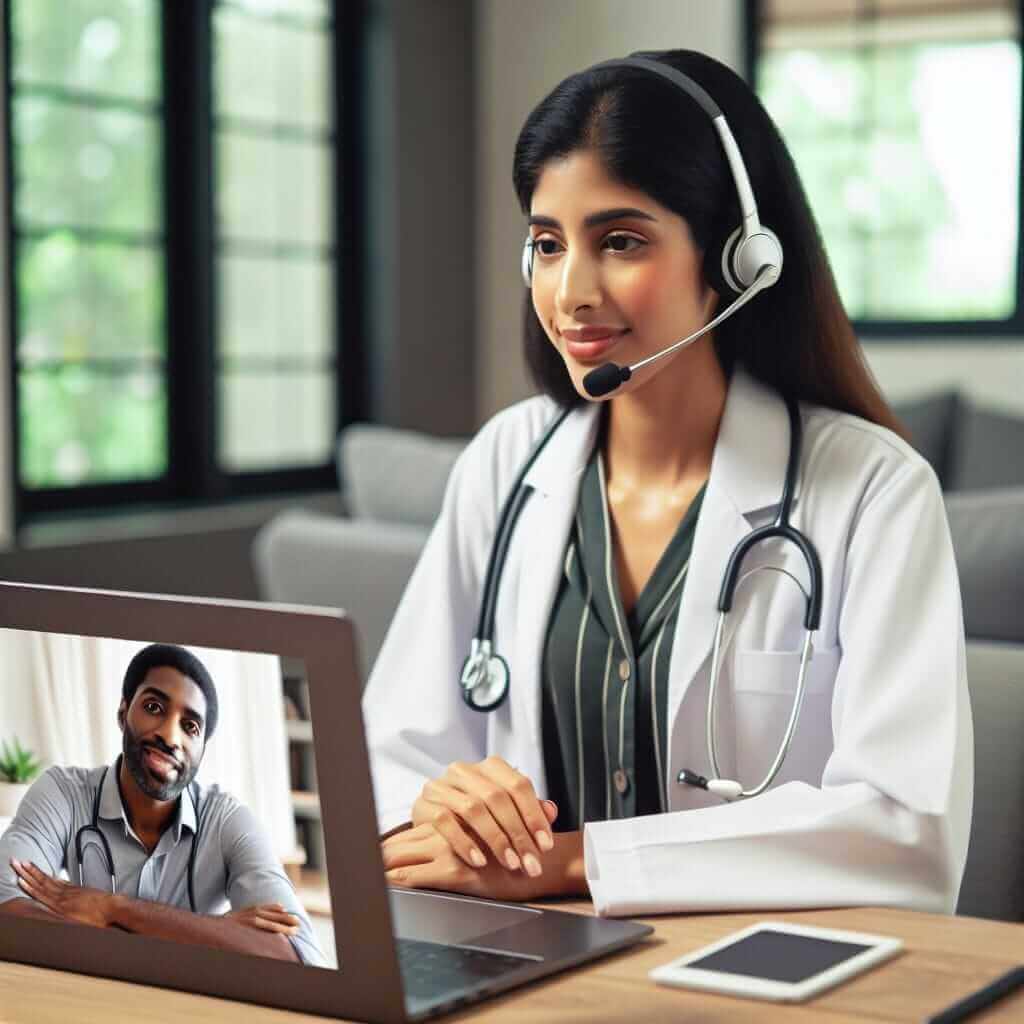The Reading section of the IELTS exam often includes contemporary and relevant topics, and with digital health becoming a significant trend, it’s plausible to expect related passages. This article will guide you through a potential reading passage centered on “How is the rise of digital health influencing healthcare delivery models?” and offer strategies to tackle associated questions. Digital health technologies, including telemedicine, wearable devices, and health apps, have revolutionized healthcare, making it crucial for candidates to familiarize themselves with this topic.
Nội dung bài viết
Practice Reading Test
Reading Passage
Title: The Influence of Digital Health on Modern Healthcare Models
Digital health, which includes telemedicine, electronic health records (EHRs), wearables, and health apps, is dramatically reshaping healthcare delivery models. The rise of these technologies provides both challenges and opportunities for enhancing patient care, streamlining operations, and ultimately improving health outcomes.
Telemedicine has emerged as a significant player, particularly during the COVID-19 pandemic, enabling healthcare providers to offer consultations, diagnose, and even treat patients remotely. This has been particularly beneficial in rural and underserved areas where access to healthcare facilities is limited. However, telemedicine does come with challenges, including technological barriers and the necessity for reliable internet connections.

Wearable devices, which monitor vital signs and activities, contribute to personalized healthcare. These devices can track health parameters such as heart rate, sleep patterns, and physical activity levels, allowing for real-time data collection. The integration of this data into health records can help physicians make more informed decisions.
Electronic Health Records (EHRs) offer a centralized way to manage patients’ health information. They enable seamless information sharing among healthcare providers, leading to more coordinated and efficient care. However, the transition to EHRs has not been without difficulties, with concerns regarding data privacy and the initial costs of implementation.
Health apps offer another avenue for self-monitoring and health management. From medication reminders to mental health support, these applications offer numerous advantages. Nevertheless, the proliferation of health apps also raises questions about their regulation and the accuracy of the information they provide.
In summary, while digital health technologies are transforming healthcare delivery, they require careful implementation and continuous evaluation to maximize their benefits and minimize potential drawbacks.
Questions
Multiple Choice
-
According to the passage, which of the following is a primary benefit of telemedicine?
A. Reduced healthcare costs
B. Improved patient-doctor relationship
C. Access to healthcare in underserved areas
D. Enhanced surgical procedures -
What challenge is associated with wearable devices?
A. High costs
B. Difficulty in data integration
C. Privacy concerns
D. Reliability issues
True/False/Not Given
-
Telemedicine was first introduced during the COVID-19 pandemic.
True / False / Not Given -
Health apps are strictly regulated to ensure accuracy.
True / False / Not Given
Sentence Completion
-
Electronic Health Records (EHRs) enable seamless __ among healthcare providers.
-
Health apps raise questions about their __ and the _____ of the information they provide.
Answer Key
-
C. Access to healthcare in underserved areas
- The passage states that telemedicine has been beneficial in rural and underserved areas.
-
B. Difficulty in data integration
- The passage mentions that integration of data from wearable devices into health records is a challenge.
-
False
- Telemedicine existed before the COVID-19 pandemic, though its use significantly increased during that time.
-
Not Given
- The passage states there are concerns about regulation, but it does not specify if health apps are strictly regulated.
-
Information sharing
- The passage discusses how EHRs allow for seamless information sharing among healthcare providers.
-
Regulation; accuracy
- The passage raises questions about the regulation and accuracy of health apps.
Common Mistakes
Overlooking Key Details
One common mistake is overlooking details that distinguish between similar-sounding options. For example, misinterpreting the general benefits of telemedicine could lead you to choose a distractor.
Misunderstanding Question Types
Confusing True/False/Not Given with Yes/No/Not Given can lead to errors. Remember that True/False/Not Given relate to factual content, while Yes/No/Not Given pertain to the writer’s opinion or claims.
Vocabulary
- Telemedicine (n.) /ˌtɛləˈmɛdɪsɪn/: The remote diagnosis and treatment of patients by means of telecommunications technology.
- Wearable (adj.) /ˈwɛrəbəl/: Something that can be worn, especially for tracking health-related activity.
- Electronic Health Record (EHR) (n.) /ɪˈlɛktrɒnɪk hɛlθ rɪˈkɔːrd/: A digital version of a patient’s paper chart.
- Proliferation (n.) /prəˌlɪfəˈreɪʃən/: Rapid increase in numbers.
Grammar Tip
Passive Voice
- Use: To emphasize the action itself rather than who performed it.
- Structure: to be + past participle (V3)
- Example: “Wearable devices are monitored regularly.”
Example in Passage: “Concerns regarding data privacy are raised frequently.”
Advice
To excel in the Reading section:
- Practice skimming and scanning techniques to quickly find information.
- Familiarize yourself with common IELTS topics like digital health.
- Understand different question types and develop strategies to tackle each effectively.
- Expand your vocabulary and note any difficult words, including their pronunciations and meanings.
Focus on quality practice and use reliable resources to continually improve your reading comprehension skills for the IELTS exam.